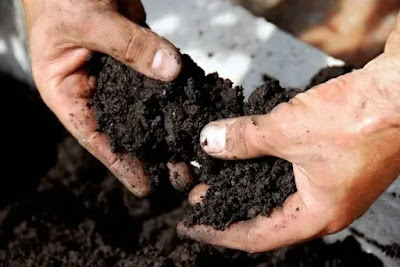Black cotton soil formation process | Black cotton soil composition | Black cotton soil in India | Stabilization of black cotton soil | Black cotton soil foundation
Black cotton soil formation process: -
Black cotton soil formation is a slow and complex process that takes place over many centuries. It starts with the deposition of organic matter and sediment from rivers or the weathering of rocks. Over time, this organic matter decomposes, and the soil becomes richer in nutrients and organic matter.
As the soil becomes more fertile, plants and other organisms start to grow in it, and their roots begin to penetrate the soil. This process further strengthens the soil structure and allows it to retain more water. As water is retained within the soil, it starts to expand and contract with changes in temperature and moisture levels.
Over time, this continuous expansion and contraction cause the soil to develop characteristic cracks, which can be several feet deep and several inches wide. These cracks allow water to penetrate deeper into the soil, which helps to further strengthen the soil structure.
As the soil dries out, it begins to shrink, and the cracks become wider. This can cause buildings and other structures built on the soil to shift and settle, which can be a major problem in areas with high concentrations of black cotton soil.
Overall, the formation of black cotton soil is a slow and complex process that takes place over many centuries. However, once it has formed, it is an important resource for agriculture and other industries and can have a significant impact on the local economy.
Black cotton soil composition: -
Black cotton soil is composed primarily of clay minerals, with a high content of montmorillonite, swelling clays and fine-grained minerals like mica, feldspar, and quartz. It is also rich in organic matter, with a high percentage of humus, which gives it its characteristic black color. The soil is highly alkaline due to the presence of calcium carbonate, and it also has a high water-holding capacity that contributes to its low shear strength and susceptibility to swelling and shrinkage.
Black cotton soil in India: -
Black cotton soil, also known as regur soil or black soil, is a type of clay soil found in several parts of India. It is predominant in the Deccan Plateau region, particularly in the states of Maharashtra, Karnataka, and Telangana. The soil is black in color and has high clay content, which makes it shrink and swell with changes in moisture content.
Black cotton soil is known for its fertility, ability to retain moisture, and suitable for growing a variety of crops, including cotton, pulses, oilseeds, and cereals. However, it also poses several challenges for agriculture due to its high clay content, which can lead to soil erosion, poor drainage, and compaction. Additionally, the soil can be difficult to till and maintain, limiting the productivity of crops.
Despite its challenges, black cotton soil is an essential resource for agriculture in India and continues to support the economy and livelihoods of millions of farmers.
Stabilization of black cotton soil: -
Black soil with lime:
lime is being used for stabilization of the black soil. The high plasticity of the black soil is reduced gradually after the use of lime which can make it workable. And the reaction between soil and lime forms more strength resistance.Black soil with brick powder:
When the brick powder is mixed with black cotton soil, the strength of the soil increases significantly. Brick powder with bagasse ash when mixed with black cotton soil improves the unconfined compressive strength of soil gradually.



Thank you for sharing this insightful article on the importance of black soils
ReplyDelete.We all know Black Soils Are Also Called As fertile soils and this The detailed information about their importance sheds light on their crucial role in agriculture. Your contribution enhances our understanding of these soils and their significance in ensuring food security. Great job!